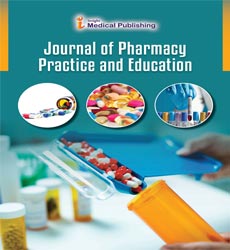UHPLC-HRMS/MS based profiling of Citrullus colocynthis
Abstract
Background: Citrullus colocynthis Schrad, also known as colocynth, is a very common fruit in traditional medicine; it is recognized by different pharmacologic activities in traditional Algerian medicine (i.e., purgative, anti-inflammatory, antidiabetic, analgesic, and antiepileptic. Some of these activities were confirmed in modern phytotherapy (Shaheen, et al., 2014). Several scientific studies carried out on crude extracts of pulp and seed of colocynth have demonstrated the antimitotic effect (Sari-Hassoun, et al., 2016), antidiabetic (Ebrahimi, et al., 2016), antiparasitic (Cheraghi Niroumand, et al., 2016), larvicidal (Hamid, et al., 2016) as well as a preventive effect against obesity (Alhawiti, 2018). However, the bioactive chemicals compounds responsible of those activities are not isolated and identified yet. Starting from two fractions of ethyl acetate from pulp and seed obtained at the Lapsaab laboratory in Tlemcen (Algeria), our objective at the PharmaDev laboratory was first to better know the chemical composition in cucurbitacins of these two extracts and secondly to compare the chemical profiles of the seed and the pulp. We were then able to isolate and identify five molecules likely to be responsible for one of the activities mentioned previously. Materials & Methods: The dereplication part was carried out using a UHPLCHRMS chain and the raw formulas were obtained via the softwre Xcalibur 3.0. The isolation of the molecules was done by different chromatographic methods: SPE, CC, MPLC and HPLC. Isolated molecules were identified by MS and 300 MHz NMR. Results: The LC-MS and TLC results showed that the chemical profiles of the seed and pulp ethyl acetate extracts are similar, that would explain why both are active on the same targets. We have also demonstrated the heterogeneity of the cucurbitacins, around 20 cucurbitacins have been identified in each fraction and some of them have never been described in C. colocynthis. The major compound isolated from the two extracts is elaterinid. Other cucurbitacins and a benzoic acid derivative have been isolated and identified: cucurbitacin E, cucurbitacin I, glycosylated cucurbitacin I and 4-hydroxybenzaldehyde. Conclusion: Our data first demonstrate the similarity in the cucurbitacin composition of the seed and the pulp. These results suggest that the various biological activities of the colocynth could be due to the action of one or many cucurbitacins.
Open Access Journals
- Aquaculture & Veterinary Science
- Chemistry & Chemical Sciences
- Clinical Sciences
- Engineering
- General Science
- Genetics & Molecular Biology
- Health Care & Nursing
- Immunology & Microbiology
- Materials Science
- Mathematics & Physics
- Medical Sciences
- Neurology & Psychiatry
- Oncology & Cancer Science
- Pharmaceutical Sciences
